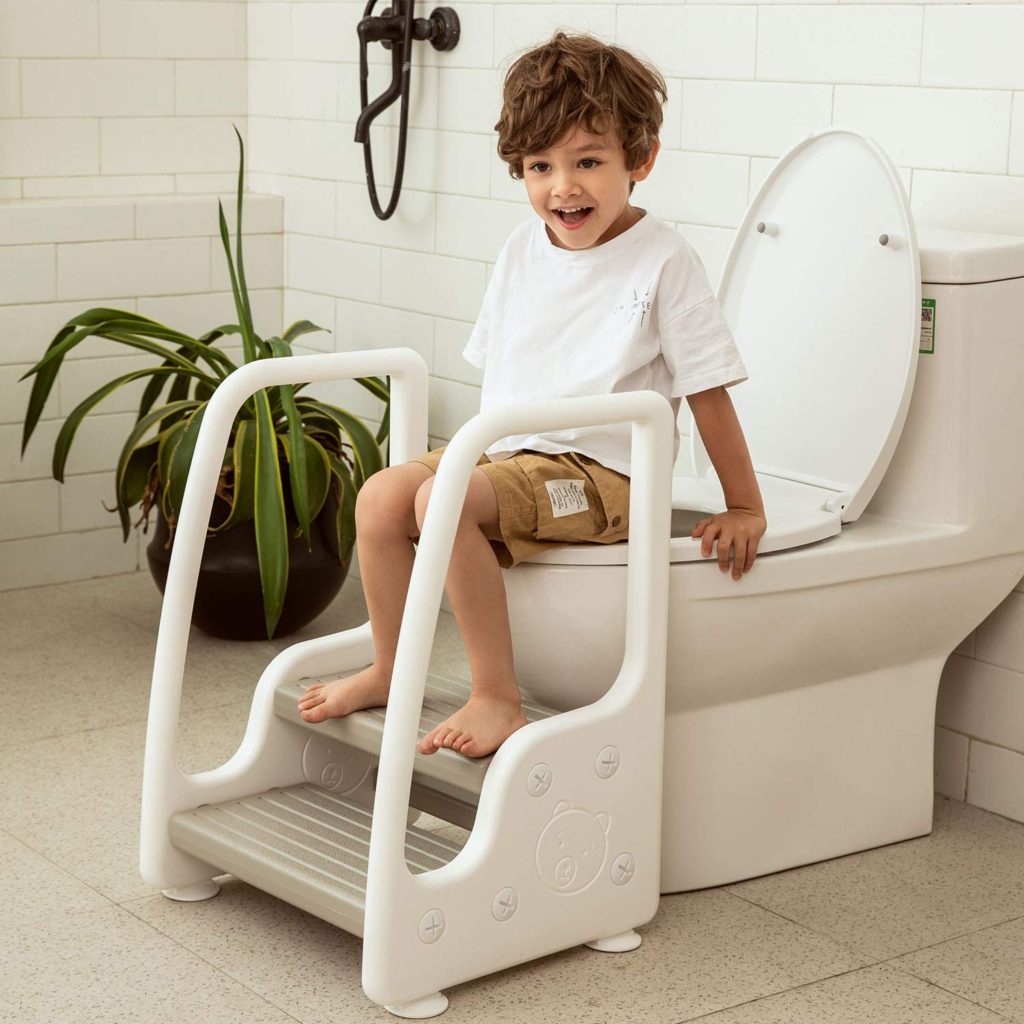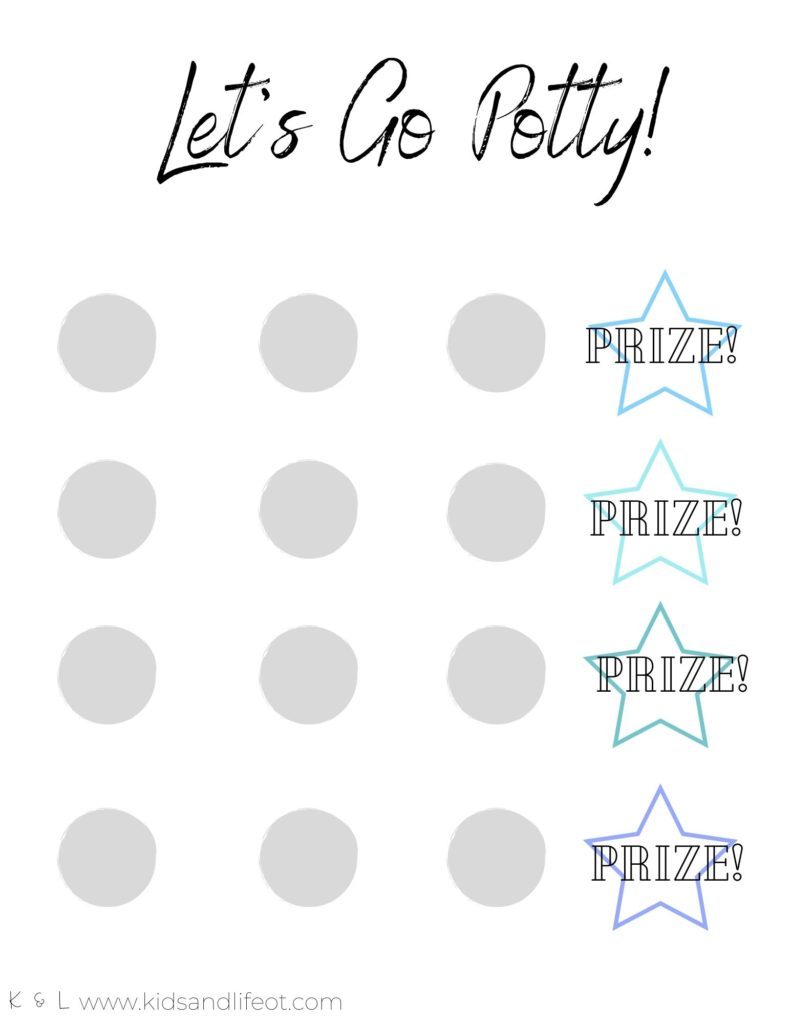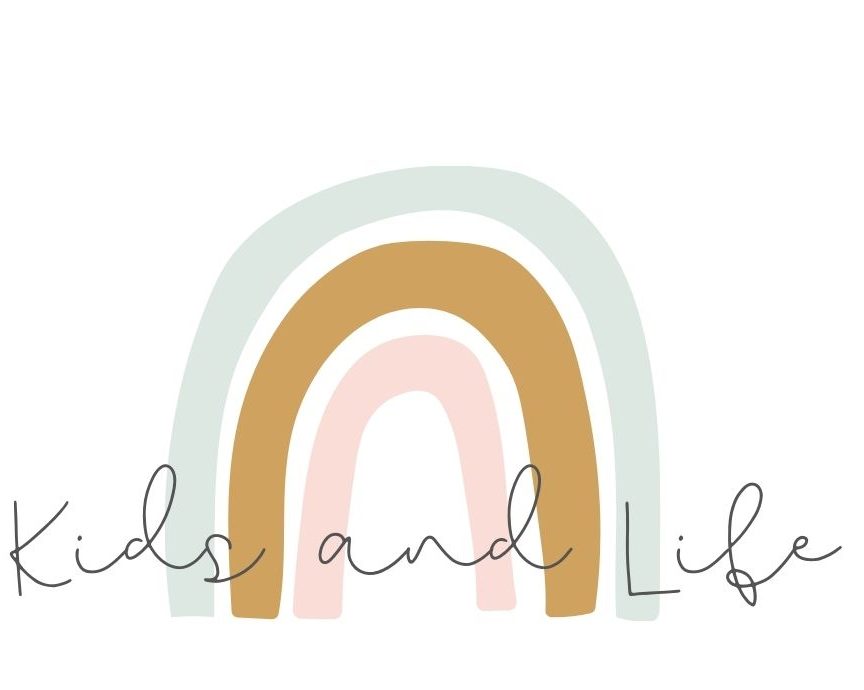Woof. Potty training. Amiright? This is a tough milestone. I’m here for you, if you want it. Read on for potty training tips and tricks when you decide the time is right!
If you have a child who wears diapers or incontinence garments, you’ve likely thought about potty training in SOME capacity. Should I do it? When should I do it? How will I do it? How will my child respond to it? What do I do if/when we fail?
Know that there will be ups and downs. And you may want to check out my other post on toilet training when your child needs a little extra support or ideas. This might be for children with developmental disabilities or kids that are just stuck at one point. It could be for kiddos that have particularities or anxiety around the whole process. Or it may be that your child is just taking longer to catch on (which is ok!).

I’m not going to tell you how to potty train your child. There are books and books and methods upon methods that have been developed after years of training and expertise. I’ve potty trained one child.
One.
But. I’ve also given tips and pointers to many, many families going through the process with varying needs. So, as with all of my posts, take this information and decide what’s best for you.
We personally used this method, but modified it as you’ll read. The rest of the information is based off of my understanding and experience with child development. So let’s get on with it. Before you feel like you’re going to pull your hair out or second guess every parenting decision you’ve ever made, here are thoughts to consider and remember while potty training:

Rookie mistake in this picture though: Carpet!
Try to be on hardwood floors or outside if possible. My daughter was naked for a while. There was a lot of getting on, getting off, dancing, return to playing, getting back on, and occasional pee accidents on the floor!
Readiness
When we talk about readiness, typically we talk about the child’s readiness. However, I encourage you to think about your readiness as the caregiver. This takes time and effort and consistency and supervision for a long period of time. There are a lot of approaches that claim that children will be trained in 3 days. I truly don’t know if that is possible for kids. Sure, they may have the concept down, but to be totally done? Nope. They are going to need reinforcement, assistance, supervision at the very least. Then there may be regressions at times. So just know that this is an endeavor that takes weeks, if not months… If you are not ready, it’s ok to say “I am not able/don’t want to/can’t do this right now.”
In terms of a child’s readiness, it can be helpful to look for these things:
-ability to stay dry for a period of time (1-2 hours)
-ability to sit for a period of time, even if short and even if you need a book or a screen
-ability to recognize that he is going or has gone (urinating or bowel movement). This could be grabbing at a diaper, going to hide, or letting you know, “I’m peeing!”
Remember, if your child has none or only some of these, it doesn’t mean you can’t go for it. Head over to my additional posts for kids that need extra help and trouble shooting toileting issues.
This post contains affiliate links and I may receive commission when you click on links and make purchases. However, this does not impact the price you pay!
Total Physical Support

Consider what type of physical support your child needs and if it will be attainable to sit on the actual toilet or if you need added equipment. Here are some options:
- A ring reducer; I recommend one with handles like this one.
- Step stool; the closer the stool can get your child to the destination, the better. This one would totally work. I also really like this option with handles for more stability. (Shown in photos below.)
- Floor potty; I have seen this one in action, and this seems to offer better positioning for elimination. (Shown in photos below.)
- 3-in-1 options; we used this one which worked fine for training and hand washing, but ultimately we ended up purchasing a taller step stool and more sturdy ring reducer once we got the hang of things and we transitioned to the big toilet.

Simple Step Stool 
Ikea LOCKIG 
Step stool with handles
Consistency
It will be really important for your child to know that the plan is the plan. To have them go back and forth with expectations between caregivers or days of the week is confusing. Assure that all caregivers are on the same page for how to approach this. Consider the language that you will use as well as the routine that makes the most sense. If one caregiver is approaching it one way and another is giving another message, that is confusing for kiddos. They don’t have the ability to reason to say, “Oh Dad does it this way, and that’s ok. Mom prefers it this way so I’ll just be super flexible and go with the flow and hold it for Dad, but not for Mom….”
Get what I mean?
But also it’s ok to back off for some time
But Jaclyn, you just said that we should be consistent! Hear me out here…If you have tried for a while (I’d say more than a week) with the consistency mentioned above, and no progress is being made and you’re ready to rip your hair out, close the book for a while. You and your child will appreciate it.
Bend the rules if needed
There are some approaches that have very specific guidelines and rules. Personally, these guidelines got to my head. Ultimately, you know your child. Here are some examples of ways that we bent the rules: put pull ups on for traveling, decided to not worry about naps and bedtime right away, gave rewards, considered doing pull ups at daycare.
Our Story
After one week of success at home but a horrible week at daycare, I reached out to my friends and family to ask what to do. My husband and I were able to be on top of my daughter, constantly watching her signs and cueing her to pee in the potty. Her daycare provider, obviously, could not do that. She was getting mixed support and struggling.
So…what do we do? do we stop? Do we send her in pull ups? HELP! Someone tell me what to do!
My friends kindly reminded me to calm down. Try again this week, and see how she does. She has worked hard and she is getting it.
It is NOT a fail to send them in pull ups.
It is NOT a fail to take a break.
It is NOT a fail to go halfway.
It’s also not a fail to have a conversation with the caregivers in the child’s life to figure out what is working and what is not working. These choices might impact the process, but who cares!? It’s your process. If neither you nor your child are able to participate gracefully, reassess your situation.
Additional supports
Consider visual schedules, reward charts, or timers and head over to my supplemental post if you are feeling stuck or if you know a traditional approach is not going to suit your child.

Ok, take advice (including this post) and potty training tips with a grain of salt. Seriously. Reach out to those you love and trust if you need it. But know that this is a tricky skill and it does take time! And again, you know your child best. I like to remember that kids have total control over sleep, eating, and toileting. We as caregivers can only set them up with all the opportunities and keep a consistent approach, and then they go from there.
Head over to my supplemental post if you are feeling stuck or if you know that a traditional potty training approach is not going to suit your child.




2 thoughts on “Potty Training Tips for Kids”